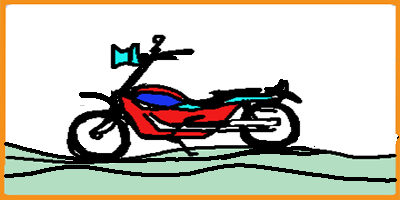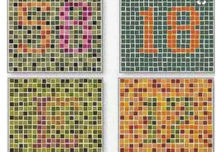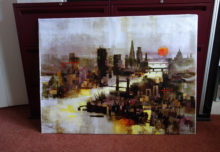…QUALITY. ZAMM…
… ‘Zen and the Art of Motorcycle Maintenance’ by Robert Pirsig…

ZAMM is a fictionalized autobiography that was first published in 1974 and has sold over 5 million copies since in nearly 30 languages.
Five million! Wow that is impressive!
What is it about?
Motorcycles?
Why is that important to us in the art-world?
EXPLANATION
Maintaining a motorcycle requires practical rational logical analysis, but there is a parallel thought dimension that Pirsig recognizes and calls Zen. Zen is peaceful, and meditative. This is a place with no pressure, and can be creative, and enjoyable. Zen is the area happily occupied by artists and art lovers.
Does that sound familiar? The Pirsig analysis is the same sort of double take on things as the ‘right brain left brain’ idea. Motorcycle maintenance is left-brain activity and Zen creativity is right-brain stuff.
Many left-brain maintenance people in the day-to-day world focus on the efficient practicality of everyday life. Zen is often unknown to, or rejected by, people like motorcycle mechanics. They do not agree that this value can be combined with self-indulgent emotional creativity.
On the other hand our right-brain art-world has an advantageous insight into the Zen creative dimension. Zen artists often belittle the satisfaction of efficient practical maintenance.
QUALITY
ZAMM reveals the extra dimension that we can call ‘Quality’. Basically ‘Quality’ looks at how good something is in the field that it occupies. And the book reveals how important and valuable that is.
A motorbike mechanic can add an extra dimension to their life by recognizing that there is a ‘highest quality possible’ sort of maintenance. It can be more than just efficient. It can also be emotionally fulfilling where the mechanic will be rewarded with the same creative experience that artists feel.
An artist could add an extra dimension to their life by recognizing that there is a ‘highest quality possible’ sort of creative perception. It can be more than just intuition. It can also be deeply fulfilling where the artist is rewarded with the same efficient satisfying experience that motorbike mechanics feel.
CONCLUSION
Quality is so very often outranked by other considerations such as economy, emotion, or convenience. But we should all learn to recognize and appreciate ‘Quality’ for its own sake. We can then experience practical efficiency and emotional creativity in equally important measure at the same time. Win win.
If you have not read the book yet please do as soon as possible.
P.S.
Have you have seen my previous blog about ‘Self One and Self Two’? Self One is learned mechanical procedure while Self Two seems to be more emotional and sub-conscious. Sports coaches try to show that Self Two can perform better if they over-ride the strict efficiency of Self One.
This seems to contradict the ‘Quality’ idea that our two mind states should embrace and learn from each other. But the ZAMM principle is that the ‘Quality’ dimension is everywhere. Self One and Self Two, and everything else as well, can be bad, good, or best at being what they are.
ZAMM emphasizes this ‘Quality’ value in everything.
************************************************************




